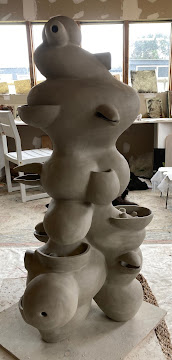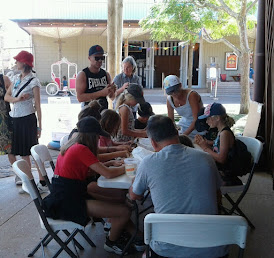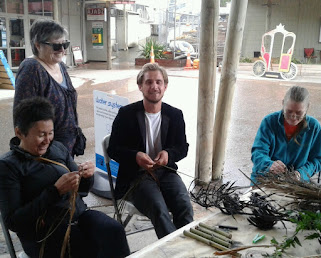GLYPHS: A DARK COMEDY IN PASTELS
A Black Comedy in Pastels plays with the human shift of mind and environment from Culture/ Nature to Culture/ Culture, as if we were the product of culture alone, and are not part of nature. Its current focus is Glyphs: elemental units of communication. Glyphs looks at the idea that other life forms are complex and communicate with each other, we just don’t hear them.
I am imagining what the communications would look like if they were ‘written’, by looking at language systems, from nature and from culture. As wild plant and animal languages are extinguished, and the languages of industrial plants and animals diminish, the language capability of A.I. blossoms.
Wild Animal Glyph designs, gouache and ink on Fabriano paper, 2022
Are you sure? Sure. Do you know, No., cardboard, gesso, paints, ink, 2023. This is a confused conversation about climate change.
Lichen Glyph, A Dark Comedy in Pastels, 1200 x 840mm, acrylic stain and ink on primed Hahnemuehle paper, 2023. Glyphs are elemental units of communication. They think about the idea that other life forms are complex and communicate with each other, we just can’t hear them. The surface is scarred and atrophied, the language written over and scribbled on by humans.
GLYPH, hand built ceramic with beads
I hand-made of porcelain, on linen twine, 930 x 540 x 430, 2023. This Glyph has been transfigured from the original in Sculpture On The Gulf 2022. It used to be a safehouse for small wild animals but now its story is of
language extinction. It is bleached of colour and complexity as it is diminished.
Dying
Glyph, moulded cardboard, gesso, inks and acrylic, 890 x 320mm, 2022. This Glyph is about language extinction. It is curling in on itself as
it dies, bleached of colour and complexity. This work is conceived as a flat
portal to the world of sounds. But as it dies, it becomes a thing, not an idea,
and curls into itself, left to the world of matter.
GLYPH CARD RACK, found object and cardboard, studio work, unfinished



























































